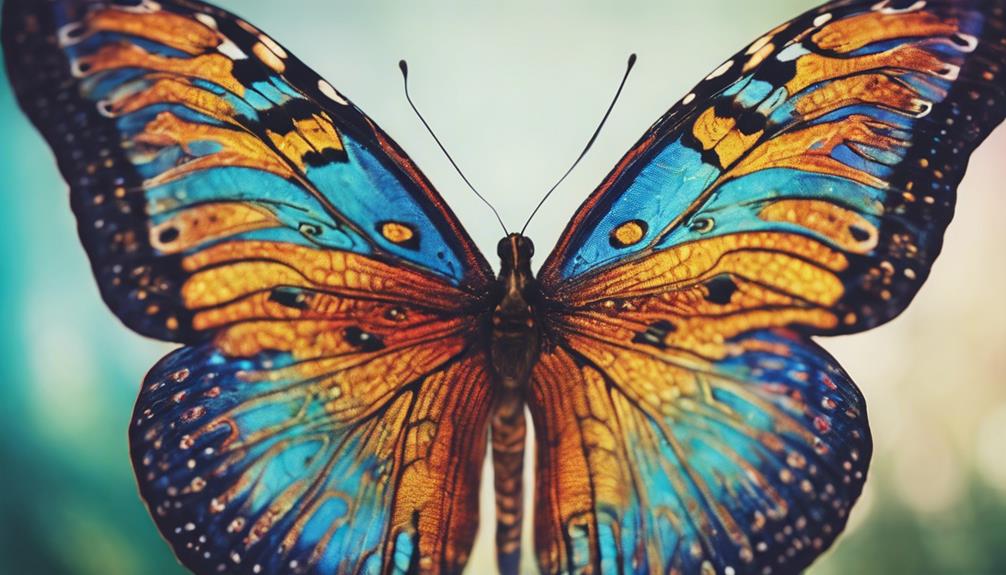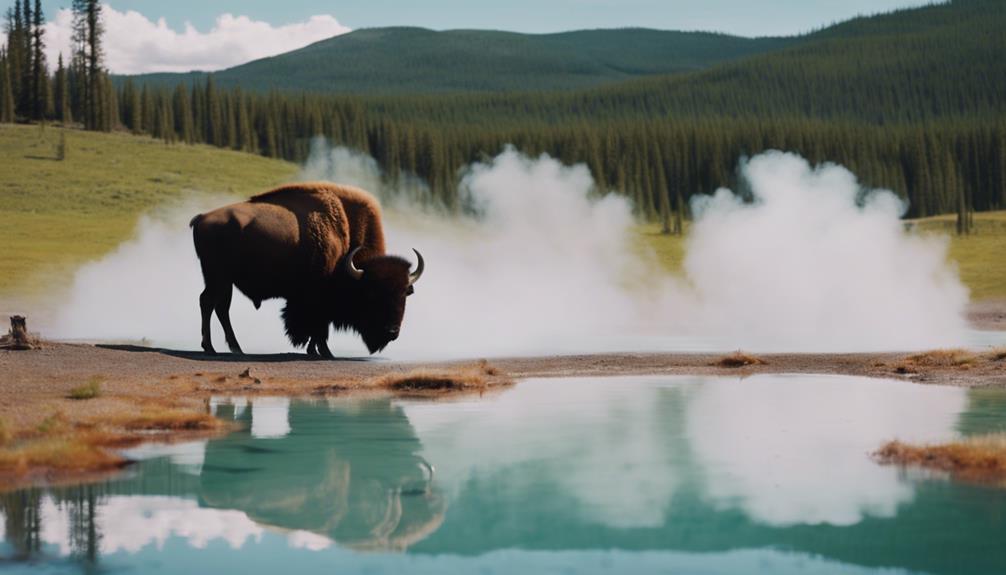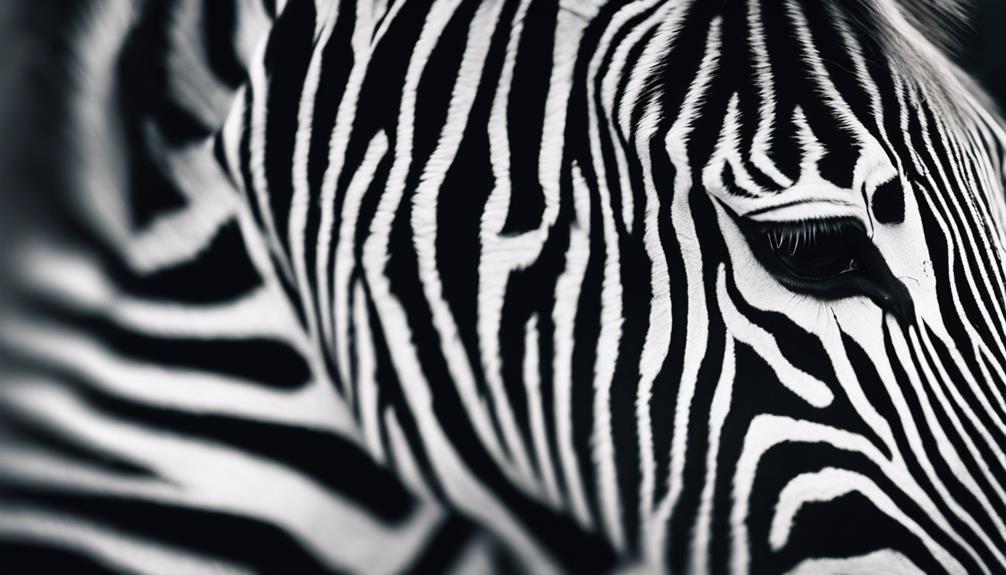Are you ready to explore the amazing Kruger National Park? Get ready for an adventure in this vast wilderness! With its rich biodiversity and impressive vegetation, this park is a haven for nature enthusiasts.
Did you know that it’s the oldest national park in Africa? And don’t forget about the thrilling nighttime safari experience and the chance to spot the famous Big Five animals.
Join us as we delve into the fun facts about Kruger National Park and uncover its historical significance and conservation efforts.
Key Takeaways
- Kruger National Park is one of the largest game reserves in Africa, spanning over 7,500 square miles and providing natural habitats for a variety of iconic and lesser-known animal species.
- The park is home to over 500 bird species and 147 mammal species, promoting wildlife preservation and supporting ecological balance and stability.
- The park’s conservation efforts ensure the preservation of endangered animals and their habitats, while also preserving cultural heritage through archaeological sites and rock art paintings.
- Kruger National Park offers unique experiences such as birdwatching, nighttime safaris, and encounters with elusive creatures, as well as providing a mesmerizing ecosystem with diverse vegetation and historical significance.
Size and Location
Kruger National Park is located in South Africa, and it’s one of the largest game reserves on the continent. Spanning over 7,500 square miles, this vast park is a haven for wildlife preservation.
It is home to an impressive array of animal species, including lions, elephants, rhinos, leopards, and buffalos. The park’s size allows these animals to roam freely in their natural habitats, ensuring their survival and promoting biodiversity.
Additionally, Kruger National Park plays a crucial role in tourism impact. Visitors from around the world come to witness the beauty of its landscapes and experience thrilling safari adventures. This not only contributes to the local economy but also raises awareness about conservation efforts and fosters a sense of belonging among nature enthusiasts who share a passion for preserving our planet’s precious wildlife.
Rich Biodiversity
In the realm of diverse animal species, Kruger National Park stands as a biodiversity hotspot. With over 500 bird species, 147 mammal species, and an array of reptiles and amphibians, the park offers a captivating showcase of nature’s wonders.
Beyond its aesthetic appeal, this rich biodiversity plays a crucial role in maintaining ecological balance and stability, ensuring the survival of numerous plant and animal species while providing essential ecosystem services.
Diverse Animal Species
Did you know that you can spot over 500 different animal species in Kruger National Park? This incredible diversity makes the park a haven for wildlife enthusiasts and nature lovers. Among these species, some are endangered, highlighting the importance of conservation efforts in preserving their habitats.
The park is home to iconic animals like lions, elephants, rhinos, leopards, and buffaloes. However, it also provides refuge for lesser-known but equally fascinating creatures such as African wild dogs and pangolins. While exploring the park’s vast landscapes, you might even come across rare species like cheetahs and black rhinos.
Kruger National Park’s commitment to conservation ensures that future generations will have the opportunity to witness the beauty of these endangered animals in their natural habitats.
Ecological Importance of Biodiversity
The incredible diversity of animal species in Kruger National Park highlights the ecological importance of biodiversity. The park is a haven for wildlife, with over 147 mammal species, including elephants, lions, and rhinos. This rich variety of animals creates a balanced ecosystem that supports the survival and growth of different species.
Biodiversity plays a crucial role in maintaining the overall health of our planet by providing essential services such as pollination, soil fertility, and climate regulation. Kruger National Park’s conservation efforts have not only preserved its unique natural heritage but also had significant cultural impacts on local communities. The park provides employment opportunities and promotes eco-tourism, contributing to the economic benefits of the region.
- Conservation efforts preserve cultural heritage
- Eco-tourism boosts local economy
- Biodiversity ensures stability for future generations
Oldest National Park in Africa
Kruger National Park is Africa’s oldest national park. It covers an impressive area of approximately 19,485 square kilometers and is located in the northeastern part of South Africa, bordering Zimbabwe and Mozambique. This vast size makes it larger than some small countries!
The park is renowned for its incredible diversity of animal species, making it a haven for wildlife enthusiasts. With over 147 mammal species, including the iconic ‘Big Five’ (elephant, rhinoceros, lion, leopard, and buffalo), as well as more than 500 bird species and countless reptiles and amphibians, Kruger National Park truly showcases the rich biodiversity of Africa.
Exploring this magnificent park will not only provide you with amazing wildlife sightings but also a sense of belonging to something greater – the awe-inspiring natural world.
The Big Five
Now that you know about Kruger National Park being the oldest national park in Africa, let’s dive into another fascinating aspect of this incredible place: the nighttime wildlife and their intriguing behavior.
When the sun sets over the vast plains of Kruger, a whole new world awakens. Here are some captivating facts about nighttime wildlife and their behaviors:
-
Nocturnal hunters: Many predators such as lions and leopards become more active during the night, utilizing their keen senses to stalk and capture prey.
-
Communicative calls: Some animals like hyenas and owls use distinct vocalizations to communicate with their group or mark territory.
-
Adaptations for darkness: Creatures like African civets have developed excellent night vision and acute hearing, enabling them to navigate effectively in low-light conditions.
As you explore Kruger National Park after dark, keep an eye out for these remarkable creatures and witness firsthand how they thrive in the magical nocturnal world.
Archaeological Sites
In this discussion, we will explore the fascinating world of archaeological sites. These sites offer a glimpse into ancient human settlements and provide valuable insights into our history.
Through the discovery of historical artifacts, we can piece together the puzzle of the past and uncover their cultural significance.
Ancient Human Settlements
Archaeologists have discovered evidence of ancient human settlements within Kruger National Park. These archaeological findings provide a fascinating glimpse into the lives of our ancestors who once called this park home.
Here are some intriguing facts about these ancient human settlements:
-
The remains of stone tools and pottery shards indicate that these settlements date back thousands of years, showing the long history of human habitation in this area.
-
Excavations have revealed evidence of communal living structures, suggesting a sense of community and belonging among the ancient inhabitants.
-
The discovery of rock art paintings on cave walls showcases the artistic skills and cultural expression of these early settlers.
These archaeological findings not only shed light on our shared human history but also invite us to connect with the past and feel a sense of belonging to this rich heritage.
Historical Artifacts Discovered
The remains of stone tools and pottery shards found within Kruger National Park give us a glimpse into the lives of our ancient ancestors who once called this place home. These historical artifacts provide valuable insights into their daily activities, customs, and way of life. The stone tools, crafted with great skill and precision, were used for hunting, gathering, and building shelters. The pottery shards reveal their creativity in designing and crafting vessels for cooking and storage. These ancient relics highlight the resourcefulness and ingenuity of our ancestors, as they adapted to their environment and utilized the available materials to meet their needs. Studying these artifacts helps us connect with our past and fosters a sense of belonging to this rich cultural heritage.
| Historical Artifacts | Description |
|---|---|
| Stone Tools | Crafted with skill; used for hunting, gathering, building |
| Pottery Shards | Creatively designed vessels for cooking and storage |
(Source: Kruger National Park Archaeological Research)
Cultural Significance Explored
Take a moment to explore the cultural significance behind these ancient artifacts found within Kruger National Park. These artifacts provide us with a glimpse into the rich cultural traditions of the indigenous communities that once inhabited this land.
They offer a connection to our ancestors, reminding us of our shared heritage and history.
They bring forth a sense of belonging, as we recognize ourselves as part of a larger community with deep roots in this land.
They inspire curiosity and wonder, inviting us to learn more about the customs and beliefs of those who came before us.
Birdwatching Paradise
You’ll be amazed by the diverse bird species you can spot in Kruger National Park. Whether you’re a seasoned birder or just starting out, this park is a birdwatching paradise.
One unique opportunity for birdwatching is at night, when nocturnal birds come out to play. With the help of a knowledgeable guide, you can witness the magical sight of owls, nightjars, and other nocturnal creatures in their natural habitat.
Another fascinating aspect of birdwatching in Kruger National Park is observing the migration patterns of various bird species. The park serves as an important stopover for migratory birds from Europe and Asia who travel thousands of kilometers to reach their winter grounds in Africa. It’s truly awe-inspiring to see these feathered travelers embark on their long journey across continents.
Nighttime Safari Experience
Joining a nighttime safari in Kruger National Park is an incredible way to witness the wonders of nocturnal wildlife. As the sun sets and darkness falls, a whole new world comes alive in the park. Here are some reasons why this experience will leave you breathless:
- Encounter elusive creatures like leopards, hyenas, and bushbabies as they emerge from their daytime hideouts.
- Immerse yourself in the symphony of sounds that fill the night air, from the haunting calls of nocturnal birds to the eerie roars of lions.
- Marvel at the spectacular stargazing experience that awaits you in Kruger National Park’s vast open skies.
During your nighttime safari adventure, be prepared to be captivated by nature’s secrets revealed under moonlit canopies. Explore the magic of nocturnal wildlife and embrace a sense of belonging within this enchanting ecosystem.
Impressive Vegetation
The vegetation in Kruger at night is truly mesmerizing, with an array of vibrant colors and unique plant species. The park boasts impressive flora that adds to its charm and uniqueness.
As you explore the park during a nighttime safari, you will be amazed by the sight of tall grasses swaying gently in the moonlight, creating a magical ambiance.
The diverse ecosystems within Kruger support a wide variety of plants, from towering trees to delicate wildflowers. You might come across rare and endangered species like the Baobab tree or the Impala Lily, which are native to this region.
These plants not only provide shelter and food for various animals but also contribute to the overall balance and sustainability of Kruger’s ecosystem. So, make sure to keep your eyes peeled for these captivating displays of nature’s beauty during your visit!
Historical Significance
Immerse yourself in the rich history of Kruger’s past as you explore its historical sites and landmarks. The park not only offers stunning natural beauty but also holds great archaeological discoveries and cultural heritage.
- Discover ancient rock art created by the indigenous San people, providing a glimpse into their way of life.
- Visit Masorini, an Iron Age site where you can witness the remnants of an ancient community that thrived in this region.
- Explore Albasini Ruins, named after early trader Joao Albasini, which serve as a reminder of the area’s colonial history.
These archaeological discoveries offer a fascinating insight into the lives of those who lived in Kruger National Park long before it became a protected wildlife sanctuary. By exploring these sites, you can connect with the rich cultural heritage that has shaped this remarkable place over centuries.
Conservation Efforts
Learn how you can contribute to the conservation efforts in Kruger by supporting local initiatives and participating in sustainable tourism practices.
Conservation methods play a crucial role in preserving the natural beauty of Kruger National Park and its diverse wildlife. By implementing strategies such as anti-poaching patrols, habitat restoration, and community engagement programs, the park strives to protect endangered species and maintain ecological balance.
These efforts not only benefit the wildlife but also have a positive impact on local communities. By supporting local initiatives, you can help create employment opportunities for nearby residents and promote their economic well-being.
Additionally, engaging in sustainable tourism practices, like responsible waste management and respecting animal habitats, ensures that future generations can continue to enjoy the wonders of Kruger National Park while minimizing negative environmental impacts.
Frequently Asked Questions
How Many Visitors Does Kruger National Park Receive Each Year?
Kruger National Park receives a large number of visitors each year, making it a popular tourist destination. The park’s visitor numbers have a significant impact on the local tourism industry and economy.
Are There Any Restrictions on the Type of Vehicles Allowed in the Park?
There are vehicle restrictions in Kruger National Park to ensure the safety of wildlife and visitors. It is best to visit during the dry season when animals gather around water sources, making them easier to spot.
Can Visitors Camp Inside the Park?
Yes, visitors can camp inside Kruger National Park. It’s a great opportunity to immerse yourself in the wilderness and have close wildlife encounters. Remember to follow park regulations for a safe and enjoyable experience.
Are There Any Specific Rules or Guidelines for Visitors Regarding Wildlife Encounters?
When visiting Kruger National Park, it’s important to be aware of your responsibilities as a visitor. Follow safety precautions and guidelines to ensure wildlife encounters are safe and respectful for both you and the animals.
Are There Any Unique Cultural Events or Festivals Celebrated in Kruger National Park?
In Kruger National Park, you can experience unique cultural traditions and festivals. Immerse yourself in the vibrant local cuisine and indulge in the flavors of South Africa while celebrating these special events.
Conclusion
In conclusion, Kruger National Park offers a captivating experience with its vast size and diverse wildlife.
As the oldest national park in Africa, it holds historical significance and has become a symbol of conservation efforts.
With its impressive vegetation and archaeological sites, the park provides an educational adventure for nature enthusiasts.
The nighttime safari adds an exciting twist to exploring the park’s rich biodiversity.
Overall, Kruger National Park is a must-visit destination for those seeking an informative and memorable wildlife encounter.





